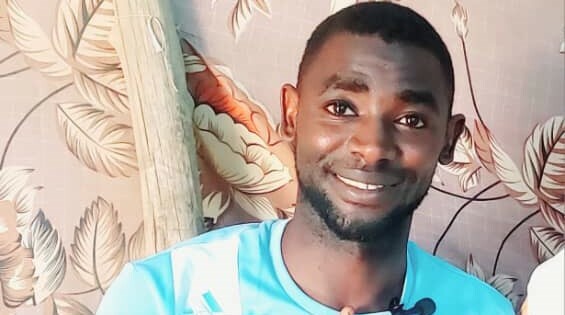As the plight of Sudanese refugees in eastern Chad grows increasingly desperate, Abdulhafeez Mohammed Adam, a nurse at a local clinic in Adre camp, sheds light on the dire health situation prevailing in the region.
In an exclusive interview with Radio Tamazuj, Abdulhafeez exposes the crippling challenges faced by healthcare facilities in the Adre camp, highlighting the urgent need for international support to avert a humanitarian catastrophe.
Below are edited excerpts:
Question: Abdulhafeez, how would you describe the current health situation of Sudanese refugees in eastern Chad?
Answer: The health situation here is dire. The condition of health facilities in the camp has severely worsened, mirroring the decline in the overall environment. Unfortunately, the available health centers are not operating at the level needed to meet the demand among refugees.
We have over 10,000 refugees but only 8 health centers in the camp, with 6 managed by MSF. However, even these centers are falling short, providing only about 5% of the required treatment services. One major issue is the lack of laboratory facilities for diagnosing diseases among the sick refugees. Currently, all services are clinical, without any medical tests, relying solely on verbal histories provided by patients.
Another challenge is the language barrier between doctors, who often speak French, and the Sudanese refugees, who primarily speak Arabic. This communication gap necessitates the use of interpreters in medical consultations, further complicating matters.
Due to these challenges, doctors typically only prescribe a limited range of medications, such as Paracetamol, Profane, and antibiotics, to avoid the risk of incorrect treatment. Despite our efforts to address these issues by providing interpreters, organizations have yet to respond positively.
Q: Do you believe these challenges have impacted the health situation among the refugees?
A: Absolutely. These challenges have significantly worsened the health situation among the refugees. Many individuals visit health facilities repeatedly with the same symptoms because of the language barrier and the lack of diagnostic facilities. This influx of patients has overwhelmed the health facilities.
Q: Have you observed any deaths among the refugees due to inadequate treatment?
A: Before addressing that, I must highlight a concerning new health issue: malnutrition. Previously, we saw one to two cases of malnutrition in children per week, but now we diagnose 4 to 5 cases daily. What is more alarming is that malnutrition is affecting not just children under 5 but also older children, lactating mothers, and the elderly. Some have gone days without food, even while breastfeeding, resulting in weakness and dehydration. Unfortunately, many don’t receive proper treatment when they seek help.
The “Li Ajlak” (For You) initiative, established by Sudanese in March 2023, stands out as the only center providing quality care in the camp. However, even this center faces shortages, relying on monthly supplies from only one organization, IOM, which are insufficient. I urge other health organizations to assess the camp’s health situation and provide support, especially with the rainy season approaching, which brings additional health risks due to unsanitary conditions.
Currently, common illnesses among refugees include diarrhea, typhoid, malaria, and chest infections. With the rainy season looming, we anticipate a surge in sicknesses. If we are currently seeing around 100 sick people per day, this number could double during the rainy season.
Regarding your question about death tolls, there is unfortunately a high mortality rate in the camp, especially among children under 5 due to malnutrition and poor living conditions. Additionally, about 5% of deaths are among the elderly, with one or two deaths occurring daily.
Q: Do you have statistics on the death toll from the beginning of the year until now?
A: While I don’t have the specific figures on hand, each health center maintains records of death tolls, tracking mortality rates throughout the year.
Q: Is there any specific health center providing maternal and child healthcare for pregnant women in the camp?
A: There isn’t a dedicated hospital, but the Li Ajlak initiative has a gynaecologist who assists pregnant women weekly, despite the lack of diagnostic equipment.
Q: What are the most common illnesses among the sick in the camp?
A: Common ailments include the common cold, respiratory infections, malaria, typhoid, diarrhea, and eye infections (conjunctivitis).
Q: Are medications available for these diseases in health centers?
A: Unfortunately, supplies are inadequate. While Li Ajlak provides some medicines, they are insufficient to meet demand.
Q: How many people visit the health center daily?
A: We receive 100-150 patients daily, encompassing all age groups, and plan to allocate specific days for chronic diseases and antenatal care.
Q: What are your daily challenges in running the center?
A: We lack sufficient medicines and diagnostic facilities, along with a shortage of specialist doctors.
Q: What is the estimated number of Sudanese refugees in your camp?
A: It’s hard to pinpoint as refugees come from various camps, and new arrivals are frequent.
Q: Have you encountered cases requiring immediate referral?
A: Yes, but lack of mobility and a referral hospital in Edere complicates matters.
Q: How do you handle cases of rape or sexual assault?
A: While incidents have decreased, survivors receive psycho-social support and medical treatment from our gynaecologist.
Q: How many rape cases have you treated?
A: Over 100, with no reported pregnancies.
Q: When did most of these cases occur?
A: Mostly during the fall of the military headquarters. We treated them promptly.
Q: Were there any pregnancies among survivors?
A: Yes, but interventions were offered, and decisions made by the survivors.
Q: Were there cases of abortion?
A: Yes, over five cases necessitated abortion due to extreme circumstances.
Q: Were any survivors diagnosed with sexually transmitted diseases?
A: Thankfully, all screenings were negative.
Q: Do you have any final message?
A: I urge international organizations to visit and witness the dire conditions firsthand. Support for healthcare provision and basic needs is desperately needed.




